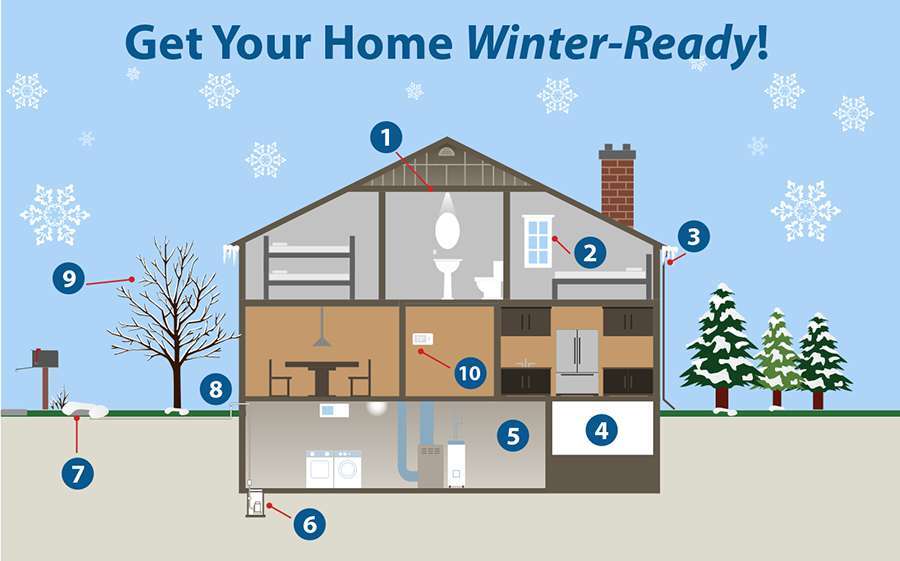Home »

With cold weather comes high utility bills and the potential for costly damage to your home due to weather-related events. Each year we find a good number of emergency calls we receive could have been prevented with some basic home maintenance. A house that is not properly winterized will consume more energy and cost more money.
Top 10 Tips For Winterizing your Home
- Make sure your attic has the proper amount of insulation.
Having the right amount of insulation in your attic will reduce your monthly costs by lowering the amount of energy you need to keep your home at a comfortable level. - Seal all leaks and cracks.
Look for air leaks around windows, doors, electrical outlets, pipes, and receptacles on exterior walls. These leaks are costing you money and adding to your discomfort during the cold months. - Ensure all gutters are clear to protect against ice damming.
Ice dams are a buildup of ice that forms over leaves and gutters, and they are caused by snow melting on the roof. Once an ice dam has formed, it will continue to trap melted snow above that will then back up into the shingles and leak into your home. This causes wood rot, wet insulation and drywall deterioration, structural damage, and dangerous mold and mildew. Ice dams on a home are a sure indicator of air leaks, a warm rooftop and low insulation. - Properly insulate your crawl space with a Radiant Barrier.
A Radiant Barrier in your crawl space keeps heat in during the winter when you need it most, and also acts as a vapor barrier, protecting your space against excess condensation and moisture. - Use energy-saving spray foam insulation in the floor joists of your basement and crawlspace.
We recommend closed cell spray foam as a replacement to dangerous fiberglass insulation. Spray foam acts as a barrier to outside air and will help your HVAC system run more efficiently. - Check your sump pump.
Check throughout the winter to make sure it is working properly, and install a battery backup in case the power goes out due to bad weather. - Keep street outlets clear of snow and ice.
The No. 1 reason a basement floods in the winter is due to frozen or clogged sump pump discharge lines. When plows push the snow against the outlet lines on the road, the water in this line that is coming from your gutters and sump pump has nowhere to go but back into your basement. This eventually floods the sump pump basin and ultimately you basement. A wooden stake at your curb to mark where your sump pump discharge line is located will help you find it when your curb is full of ice and snow. - Prevent frozen discharge lines.
The discharge line is the pipe that comes from the sump pump and channels the water away from the home. If this line freezes, the sump pump will run, but never lower the water level in the sump pit. If the pump is running continuously, it will burn out. A Freeze Relief from The Basement Doctor is an innovative product that offers a permanent solution once it is installed where the sump pump discharge line exits the home. It is maintenance-free, requiring no action from the homeowner. - Check tree branches and trim any that are close to your home or power lines.
These branches can cause costly damage during a bad winter storm. - Maintain a consistent temperature inside the home.
A programmable thermostat can go a long way to saving energy and money, especially when we tend to crank the heater up.

